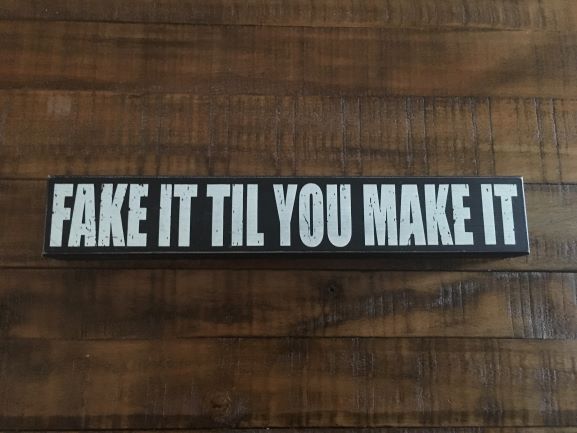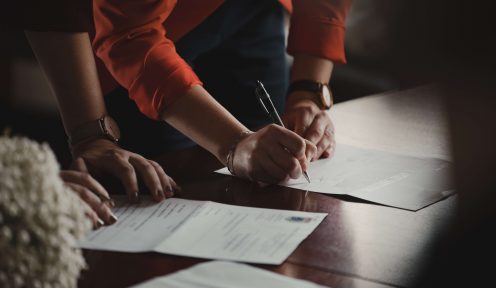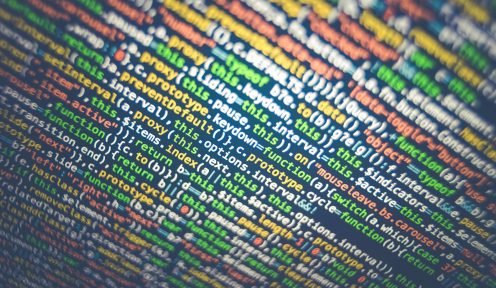
01.07.2020
Plagiarism, copy and paste. Who is free of guilt?
Is it copy and paste a way if plagiarism? Is there plagiarism in the writings of lawyers? And is there plagiarism in copying and pasting an extract from a Judgement? Is it plagiarism to copy and paste extracts for a doctoral thesis? Where does the right to quote end and plagiarism begin?
 Por
Ortega Lopez-Bago , Francisco Javier
Por
Ortega Lopez-Bago , Francisco Javier The origin of the word plagiarism comes from the ancient Rome. “Plagiare” was the improper and unlawful use of another’s slave, for one’s own use. It is curious how more than a thousand years later, words and attitudes (literal and metaphorical) remain chained.
However, now, almost two thousand years later, it is much easier to plagiarize and also much easier to detect plagiarism.
Unfortunately, this quiz has a limited amount of entries it can recieve and has already reached that limit.
What tools detect plagiarism today?
We offer these six links to tools that detect plagiarism, but we could offer many more.
Plagiarism
It could be argued that the fundamental motivation for plagiarism originates in saving one’s effort. Or also, in other words, in resisting to think for oneself or taking risks with one’s ideas.
Plagiarism is not a new concept; however, the digital revolution has led to a significant increase of it. The use of the Internet gives us access to numerous sources of information and therefore it is more convenient to “copy”. Overcoming the laborious task of having to copy by hand, as had to be done before.
One of the areas most affected by this figure is the academic one, through the use of the so-called “copy and paste”. Moreover, most of the students who do it, do it without paying attention to the viability of the source. And with the only motivation of saving time and comfort.
With regard to the drafting of texts, another area quite affected by plagiarism is the legal one. The use of a legal document signed by a professional could be considered as plagiarism if it was protected by copyright. Although there is no mention of procedural or judicial writings in the Copyright law (CL), there are rulings that consider them to be literary works “lato sensu”. And if they are original, there is nothing to prevent them from enjoying copyright protection.
This article will study the concept of plagiarism, its regulation and Judgments in the educational and legal field.
Si te ha interesado este artículo no dudes en leer:
Is it legal to record a conversation? Under what circumstances?
Definition and regulation of plagiarism
We must assume that the term plagiarism is not a legal concept. So much that is not even mentioned in the Copyright Law.
Therefore, and for your understanding, we must refer to how it is defined by the Courts. Our Supreme Court, in Judgment nº 1204/2008, 1st Chamber, Civil Law, December 18th 2008 defines it as:
“the substantial copy, as a mechanized material activity and little intellectual and less creative, lacking any originality (Judgements of January 28, 1995, October 17, 1997 and March 23, 1999)”
In the same Judgement, it is stated that coincidences cannot be called plagiarism if they do not affect the basic and fundamental structures:
“It does not constitute plagiarism when there are two different and differentiable works of art even though they have common points of exhibition (Judgement of February 20th 1992) and there is not a full copy (Judgement of January 28th 1995) even though they have “multiple and undeniable coincidences” (Judgement of June 7th 1995) which refer, not to basic and fundamental structural coincidences, but to “accessory, added, superimposed or non-transcendental modifications” (Judgement of January 28th 1995 and March 23rd 1999)
From the definition that the High Court gives to plagiarism, we can extract that for its concurrence the following elements must be given:
- That it is an unintellectual and creative activity
- Lack of originality and talent by the actor
- Affecting basic and fundamental structures. Excluding accessories or non-transcendental modifications.
As it was said in the beginning of this point, the term plagiarism is not reflected in the CL. Thus, we only find its regulation in article 270 of the Criminal Code:
“Any person who, with the intention of obtaining direct or indirect economic benefit and to the detriment of a third party, reproduces, plagiarizes, distributes, communicates publicly or in any other way economically exploits, in whole or in part, a literary, artistic or scientific work or performance, or its transformation, interpretation or artistic performance fixed in any type of support or communicated through any means, without the authorization of the owners of the corresponding copyrights or their assignees, shall be punished with a prison sentence of six months to four years and a fine of twelve to twenty-four months.”
Court Decisions of Plagiarism
Firstly, and in the field of education, we would like to highlight the Judgement of the Provincial Court of Murcia (Fourth Section) No. 444/2016 of July 14th. In this ruling, a possible case of partial plagiarism of a Master’s Final Project between two students is analyzed.
The applicant seeks a declaration that the defendant’s MFP constitutes an infringement of her copyrights. Together with an order of to cease the unlawful activity, the annulment of the MFP and publication in a national and local newspaper. In addition, the payment of 15,000 euros for moral damages caused and 3,924.72 for material damages is requested.
The Judgement of the Court of First Instance rejects the claim filled by dismissing the infringement for lack of originality of the MFP of the plaintiff. As he considers that she has previously plagiarized the doctoral thesis of the director of her MFP which was already published. That the collection of data does not constitute the creation of a database, nor does it confer any copyrights over it. Finally, he does not appreciate plagiarism in the title of her project because, not being finished, it has been subject to modification. Not to mention that it is a research project, formed by a team in which the plaintiff was included. So again, it lacks originality.
Well, having explained the background, the Judgement of the Provincial Court of Murcia, begins by resolving the appeal by alluding to the term “original” in the following sentence:
“This requirement must be assessed according to the nature of the work and, as it is an end-of-course project for a university master’s degree in nursing, it is appropriate to bring up, as the contested judgement does, what the SC said in the judgment of November 8th 2012 (RJ 2012, 10426) according to which it cited “The scientific work, mentioned in Article 10 of Royal Legislative Decree 1/1996, of 12th April (RCL 1996, 1382), is eligible for protection as an object of copyright, but not because of its content – scientific, technical or useful in practice – but because it has – if any – an original form of presentation” and after recalling that the TRIPS (Agreement on Trade-Related Aspects of Intellectual Property Rights of April 15th 1994 (RCL 1995, 192), ratified by Spain by Instrument of December 30th 1994) states that “[copyright protection shall cover expressions but not ideas, procedures, methods of operation […]” it reiterates that “In conclusion, scientific creations are not the object of copyright, by reason of their content – ideas, procedures, systems, operating methods, concepts, principles, discoveries… – nor by reason of the training or experience of those who carry them out, promote them or the efforts of those who finance them, but only by reason of the literacy or artistic form of their expression”. (…)”.
What is relevant to the assessment of Plagiarism?
Based on the above, the use of another’s ideas or knowledge cannot be penalized. What is relevant for the appreciation of plagiarism is not so much the content, but the form in which it is expressed or ordered. It points out:
“The content is determined by a series of data and techniques (specifically, here of pharmacological, nutritional, therapeutic and psychoeducational order, when dealing with works in controversy about food treatments in relation to schizophrenic patients), so it is logical, because it cannot be otherwise, that technical or scientific descriptions or concepts contained in it may appear in other works of the same function, but it is also evident that it can be communicated in many different ways, with different expository or literary formulas (…)
Applied to the plaintiff’s MFP, it is possible to consider that her work is not original because it already existed. However, the Provincial Court considers that in her case, it is not a question of comparing the MFP and doctoral thesis. That the only object of analysis is to check whether there are parts of the defendant’s MFP that copy the correlatives of the plaintiff’s MFP. And therefore, whether the latter deserve protection because they are original or no when reproducing the thesis of the director of the MFP.
Plagiarism and the right to quote
After a detailed analysis of the proceedings of the two MFPs, the conclusions of the Hearing are as follows:
“the defendant’s MFP, in the part collated, contributed nothing, limiting itself to copying the previous MFP of the plaintiff, or directly in other individuals the DT of the professor who directed his work (…)”
“the plaintiff lacks the legitimacy to reproach him in all those areas where his MFP is not original either, as stated above. (…)”
That there is only one section of the work from which it disagrees with the judgement of the Court of First Instance, namely that
“the selection of the content, and its narrative exposition reveals a creative activity, proper to the author (the actor), sufficient to consider it original, given the literary limitations that a work with a scientific content entail. As a result, we must consider the claim of plagiarism in relation to these specific aspects of the MFP, since the defendant’s MFP is limited to the reproduction – largely literal – of these aspects of the plaintiff’s work, without being protected by the right to quote, as the SAP of Barcelona of February 17th 2016 (JUR 2016, 78683) says in a similar case, there is plagiarism when “(the coinciding paragraphs, as we have pointed out, are not protected by the right of quotation which, as a limit to copyright, that is contemplated in article 32 in the CL (RCL 1996, 1382). In the analyzed paragraphs there is not mention of the author of the disclosed work (the plaintiff), not even in parenthesis or with reference quotations included in other passages (…)”
And therefore, considering the concurrence of this partial plagiarism, with the discarding of all the other petitions of the plaintiff, it is ruled:
“partial estimation of the claim, we must declare that the final Work of the defendant’s Ms. Lorena entitled “Effectiveness of an educational program, diet and exercise, in the prevention and reduction of obesity in a group of schizophrenic patients” involves a violation of the intellectual property rights of the plaintiff Ms. Emma on the Final Work of the Master entitled “Body Mass Index and Metabolic Syndrome: Influence of an Eating Behavior Scale on Schizophrenic Patients at the San Felipe del Meditarráneo Clinic in Murcia”, due to partial plagiarism reduced to parts of section 1.1.1 and 1.1.2; section 1.1.5 and section 1.2 (except for two thirds of subsection 1.2.1), and we must sentence the defendant to be and to go through with that declaration, to cease its unlawful activity and to pay the applicant 500 euros for non-material damage (…)”.
Does Plagiarism apply to lawyers? Are their writings plagiarisable?
As it was announced in the introduction, legal texts are also plagiarized and generally by other professionals. To this effect, we would like to analyze the Judgement of the Provincial Court of Salamanca nº 107/2017, dated March 2nd 2017.
The litigation deals with the possible existence of plagiarism of a claim prepared by a lawyer, later used by another lawyer. In addition, the lawyer had a collaboration contract with the defendant’s office for professional legal services.
When the plaintiff started working in the firm, she had drafted a statement of claim for the defense of her own case. And she asked one of the lawyers, now the defendant, to be her lawyer in the proceedings. After acceptance, a list of professional services was established, accredited by the General Power of Attorney for Litigation. Granted by the plaintiff, in favor of the defendant.
As a result, the defendant lawyer used the plaintiff’s brief to work on the preparation of what could be the final claim. The plaintiff then proceeded to register the document as a creation of scientific doctrine in the Copyright Registry.
The plaintiff’s claim is based on these facts:
“to declare the existence of an infringement of her legitimate copyrights on the initial demand document that she handed to Mr. Everardo, who – always according to the version of the plaintiff – would have limited himself to signing that professional document “given how well written and argued it was”, the plaintiff herself consenting to it in view of the urgent need to obtain legal representation due to her inexperience, and who better that the lawyer with whom she was just beginning her internship. The plaintiff considers that this is a case of plagiarism of a professional lawyer’s brief protected by the Copyright Law, extending her request for compensation of 24,000 euros to the joint administration of CHC and also to Mr. Everardo himself as the fact administrator of the same entity. (…)”
While the defendant’s attorney maintains that:
“the statement of claim in question was the result of joint work between him and Ms. Bibiana, and he alone signed the application to initiate the proceedings in so far as he was empowered to do so by Ms. Bibiana on October 9th 2009, who did not intervene in the proceedings as she had a little procedural experience and had not yet been sworn in as a lawyer before the professional body. The defendant states that the plaintiff provided him with 80-90 pages written by her, although he had to make corrections to this text because, in his opinion, it was a so-called “procedural deviation” (…)”
In view of the facts the Judgment proceeds to analyze whether there is an copyright on professional writings. And, if so, whether there has been an infringement by plagiarism of the initial document prepared by the plaintiff. It reaches the following conclusions:
- “Article 10.1 CL establishes in general that all original literary, artistic or scientific creations expressed by any means or medium, tangible or intangible, currently known or to be invented in the future, are the object of intellectual property, adding them, by way of example only, a list of creations that may be considered works and obtain copyright protection, provided that they are original. There is no explicit reference in this list to lawyers’ papers or court or tribunal documents, but in point (a) reference is made to “writings” and “forensic reports”. (…)”
- “it could be argued that the professional writings of lawyers fit into the broad concept of “forensic reports” (which also serves to cover oral forensic reports made during the trial by lawyers and prosecutors) or into even broader concept of “writings”. (…)”
- “the forensic or professional writings of lawyers may be considered “lato sensu” literary work, and if they are “original” they may qualify for copyright protection. Therefore, the author will be recognized by the simple fact of the registration, the moral rights (art 14 CL) and patrimonial rights (arts 17-24 CL) established by the Law. (…).
However, as the Judgement explains, in the present case the existence of copyright in the disputed document has not been called into question. Nor has its originality been called into question. Furthermore, there is no reason for a lawyer to refuse to provide the client with a copy of his complaint. As the Judgement says: “one thing is property on the support (or a copy of it) and another is the copyright on the work. The ownership of the support does not attribute any right of exploitation over the work (article 56 CL). (…)”
This would be very different if one lawyer used the work done by another lawyer before. We quote:
“But if a lawyer wants to use the work done by another lawyer previously (which can be the case when, at the client’s request, there is a leave of absence to authorize another professional to continue with the case), he should ask for authorization (license). Another thing is that this license is implicitly granted if the permission is granted by the previous lawyer and he makes available all the documentation to the new lawyer, including the complaint, answer or other forensic documents. But if a lawyer simply uses the professional writings prepared by another colleague because, for example, copies are provided by the client, a case to damages could arise, without ruling out even a possible case of plagiarism. (…)
The above, taken to the litigious matter, concludes the Judgement that we are not before a case of plagiarism inasmuch as
- “in the case we are hearing, the characteristics of plagiarism are not present, since even though the existence of a copyright on the brief initially drawn up (whether in draft form or in a more finished form) by Ms. Bibiana is recognized, the fact that she consented to the use of that brief by Mr. Everardo in the context of a relationship for the provision of legal defenses services, as well as the proven fact that Mr. Everardo modified that document to greater or lesser extent in order to correct it and adapt it to the needs of the proceedings, could be assimilated to an authorization or agreement between lawyers (although in this case the trainee is at the same time a client of the lawyer who is supervising her trainee), but not in order to use the professional document but to adapt modify or improve it; which it leads us to the concept of a composite work, and not a collaborative work as the judge states “a quo” in the judgement under appeal, (…)”
- “the work in collaboration (art 7 CL) is the unitary result of the collaboration of several authors, which requires an action at the same level, without hierarchical or subordinate relationship, collaborating two or more authors in the creative process. (…)”
- “a composite work (art 9 CL) is a new work that incorporates a preexisting work without the collaboration of the author of the latter, without prejudice to the rights that correspond to the latter and his necessary authorization. The composite work therefore implies a transformation of a pre-existing work (article 21 CL) which must have the authorization of the author or holder of rights over the latter, giving rise to a derivative work (article 11 CL) resulting from the process of transformation or modification, in which both the author of the work resulting from the transformation or derivative work share the right (…)”
- “the authorization granted by Ms. Bibiana to Mr. Everardo to use her brief in the course of ordinary procedure 1297/09 implies an authorization to modify that text as far as necessary within that broader relationship of providing legal defense services, thus finding ourselves before a case of a composite work (art 9 CL) which in itself rules out plagiarism but not a possible claim of rights over the exploitation of the work. (…)”
It is therefore agreed to dismiss the appeal lodged by the applicant’s lawyer.
Conclusions
- Plagiarism is not a strictly legal concept.
- Ideas as such are not protected by copyright. What is protected is the format in which they appear in the work.
- The requirement of originality is key. You cannot report “plagiarism” of another “plagiarism” if a document is copied with a mere bibliographic citation, it will not prevent the appreciation of plagiarism. As long as it affects the basic and fundamental structure of the work. It will not be plagiarism if it affects the accessories.
- The professional writings of lawyers can be considered “lato sensu” literary works. Even if they are not listed in the Copyright Law. This is what is stated by Jurisprudence.













